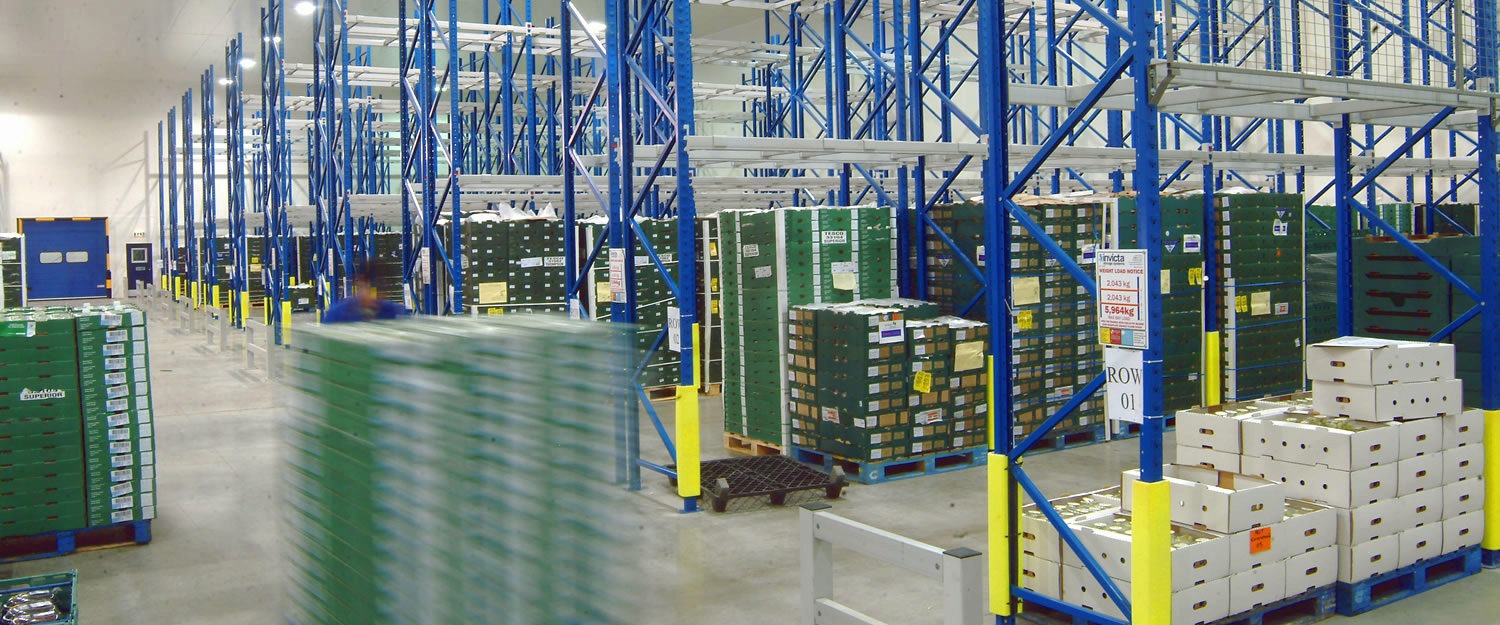For your information
You are being redirected to one of our divisional subsites which contains more detailed information on the required division. To navigate back to the main Invicta Group site, please click the link found in the footer at the bottom of the page.
- Systems
Systems
- Expertise
Expertise
- Projects
- Insights
Insights
-
Articles
- Why racking efficiency can make or break a business
- Why ‘temporary’ warehouse structures can be a long-lasting solution
- Manual vs automated racking: picking the right one for your warehouse
- How to implement augmented reality (AR) in warehouses
- How SEMA improves warehouse racking safety
- Why do I need a Racking Inspection?
- Frequently Asked Questions
- A – Z of Terms
-
Articles
- Contact
Contact

UK +44 1843 220 256

US +1 305 328 9444

UAE +971 4 277 6225

Qatar +974 4441 4340

India +91 79945 14049

Malaysia +60 16 286 6225
- Start your project
What are the benefits of a clad-rack warehouse?
25th January 2022
Clad to be here
Quick Quote
Contact Mick Coyne
To get a quotation or arrange a free site survey - Call Mick Coyne on
-
 UK
UK
Current location:
Quick Quote
Contact Mick Coyne
-
 UK
UK
Current location:
With the rapid growth in online shopping, warehouse space has become a precious commodity. In response, firms are increasingly looking at the best ways to optimise the space they have, and using new technologies to store and retrieve goods in smaller spaces.
A relatively new trend in efficient warehouse design is the clad-rack warehouse. This approach integrates racking into the structure of the warehouse itself, ensuring that no space is wasted – and allowing for even more efficient access, retrieval and storage than many of the highest density forms of racking.
What is clad-rack warehousing?
It may go without saying, but most racking is installed in existing warehouses. Generally this is because businesses lease or purchase existing warehouse space rather than constructing a new warehouse from scratch. A variety of high density racking formats can be installed in a typical warehouse space depending on the needs of the business, and the equipment they have available (e.g. whether they have standard or narrow-aisle forklifts).
Clad-rack warehousing integrates racking into the structural design of the warehouse. The racking forms part of the supports for the warehouse superstructure, with the walls and ceiling usually being extremely tight to the racking units inside. What you essentially end up with is a solid cube of racking with an exterior cladding, with little to no space between aisles.
Goods are stored and retrieved by an AS/RS or other automated system which can travel within these small spaces, and commute pallets to and from an exterior loading area. Due to the extremely limited space and specific mode of transport, clad-rack warehouses are generally designed for smaller items.
One prime example would be Ocado’s warehouses, where online grocery orders are retrieved from columns of pallets by robots sat on top. This design is becoming increasingly popular with online retailers, as it maximises throughput and allows for dense, smaller warehouses to be constructed in urban areas, allowing for same-day delivery.
What are the advantages of clad-rack warehouses?
The most obvious benefit to clad-rack warehousing is the space it can save compared to traditional pallet racking layouts. As the space between both the aisles and the structure around the racking is minimal, the storage capacity of clad-rack warehouses is almost unbeatable. The only way a clad-rack system could be optimised is to enhance the design of pallets or the means of retrieval to make picking and storage faster.
The second benefit is the switch to a fully or partly automated storage and retrieval system. While the initial capital expenditure may be substantial, AS/RS and other forms of automation pay for themselves in the long run. The use of these systems largely eliminates the need for warehouse operatives, allowing you to shift resources to other areas of the business.
The third great advantage is simply maintaining the space. While a tightly-packed clad-rack warehouse presents some issues in terms of cleaning and maintenance, it also has advantages. Heating or cooling the space is much more efficient due to the lack of wasted space, particularly the empty headroom that is present in most warehouses. And due to the limited presence of human operatives, lighting can be used more situationally.
What are the disadvantages of clad-rack warehouses?
Clad-rack warehouses fulfil a specific role, and won’t be for everyone. The obvious point of contention is that they need to be built from the ground up, something that’s only an option for larger firms. They also necessitate the use of an AS/RS to store and retrieve goods, adding an additional cost burden, both in the initial purchase and the ongoing repairs and upgrades (although working with a RaaS company can alleviate this).
The second issue is one of safety. Due to the extremely tight confines of the racking and superstructure, it can be extremely difficult to keep clad-rack warehouses clean and safe. Fire safety is a particular issue which requires extreme care and attention: as well as needing VESDA systems, there also has to be some form of advanced fire suppression, such as using gas. Even then, the Ocado warehouse fire shows the pitfalls of introducing robots to such a tight space.
Finally, the use cases for clad-rack warehousing are somewhat limited. Such dense racking is only suitable for storing smaller items which can be easily picked, or light pallets that can be easily removed or deposited. This is great for fulfilling small orders, such as for groceries or certain online shopping, but less useful for things like building materials, appliances and other heavy-duty items.
What are the alternatives to clad-rack warehousing?
Clad-rack warehouses are unquestionably the most efficient form of racking for specific scenarios, and are being widely adopted by leading online distributors. However, this doesn’t mean that they work for everyone. For many businesses, there will still be ample potential to improve the storage capacity (or reduce the storage footprint) of your existing warehouse using another form of high density pallet racking.
To achieve a similar density of storage to clad-rack warehousing, you might consider a format such as narrow aisle or double-deep racking. These formats rely on special equipment, such as forklifts which can rotate in place to fit in small spaces, as well as changes to your workflows. Other options such as pallet shuttle racking or a multi-tier racking system may also allow you to increase your storage density, while changing the way in which you store and retrieve goods.
The most analogous form of racking to a clad-rack warehouse may be an AS/RS integrated racking system. An AS/RS uses autonomous or semi-autonomous vehicles to travel along the racking, storing and retrieving goods. This system will usually be combined with some level of human operation, such as dropping the items off for packing and distribution, and will be closely overseen by a supervisor or technician.
—
Clad rack warehousing has a particularly specific use case, and is something that must be considered at the earliest stages of a new warehouse build. For those companies who are looking to maximise their storage capacity using the most modern tools, however, a clad rack warehouse may be the solution – and a key edge in the battle for e-commerce and storage sector dominance. To find out more about clad-rack warehousing and discuss your needs, get in touch with us today.
Accreditations & Affiliations






Start your project
Tell us about your project. Please complete this form. One of our sales team will come back to you with more details. If you prefer, you can drop us an email.




Share/Like this page